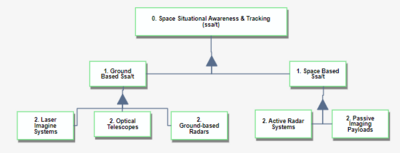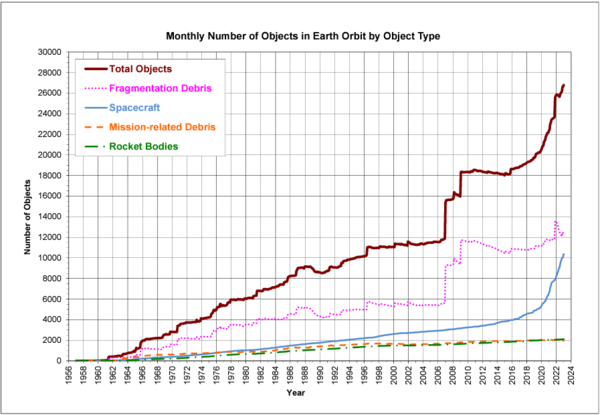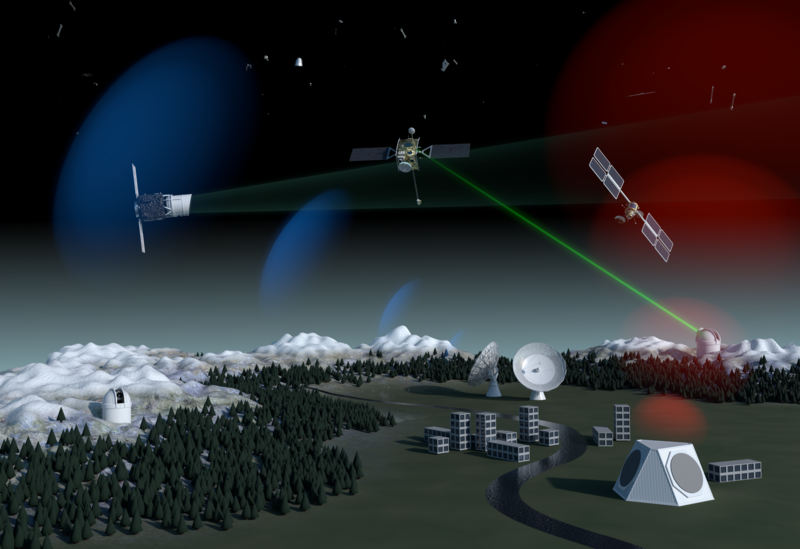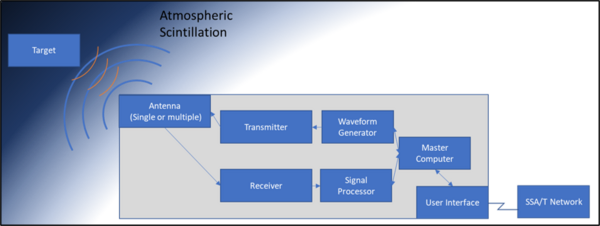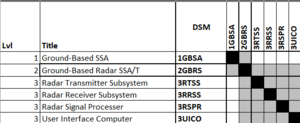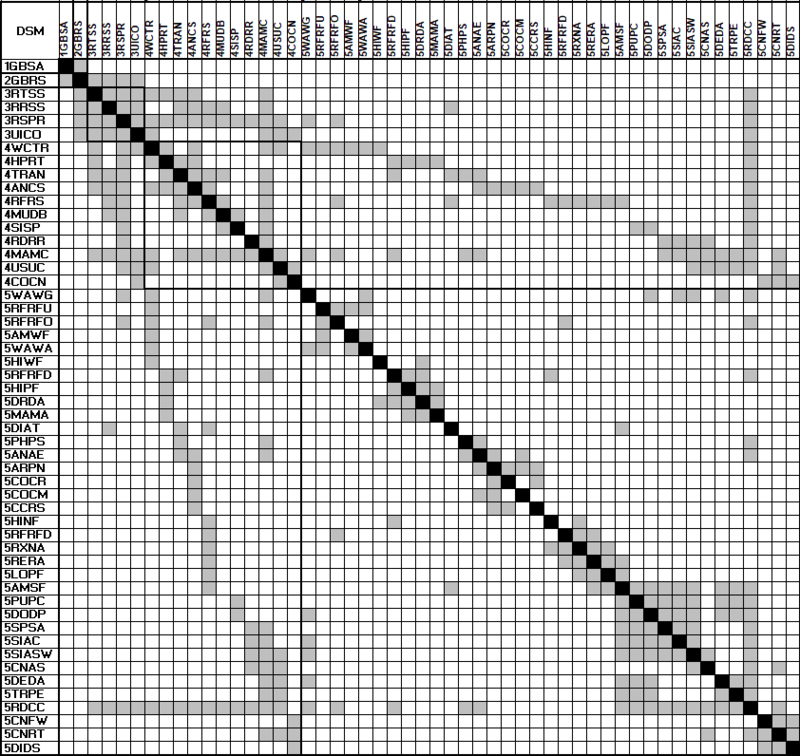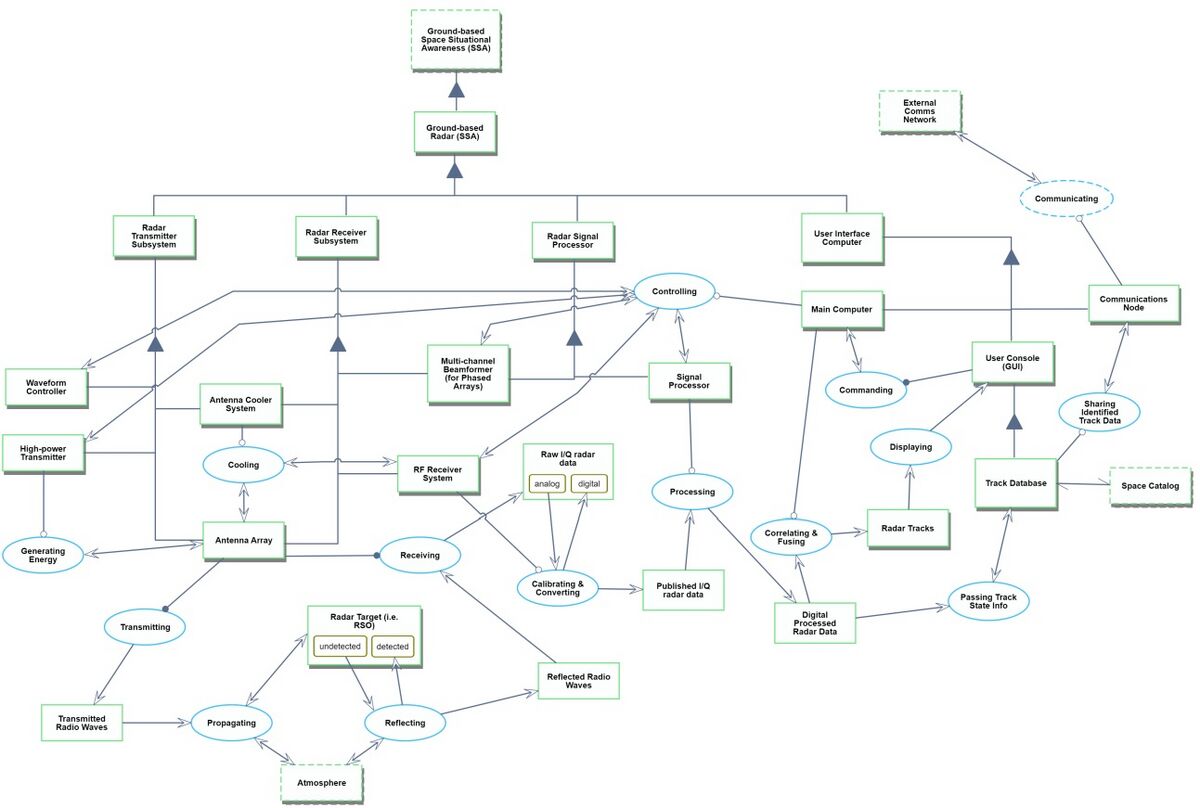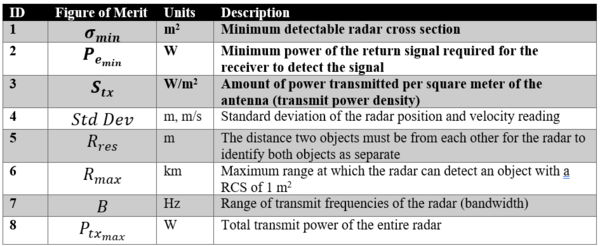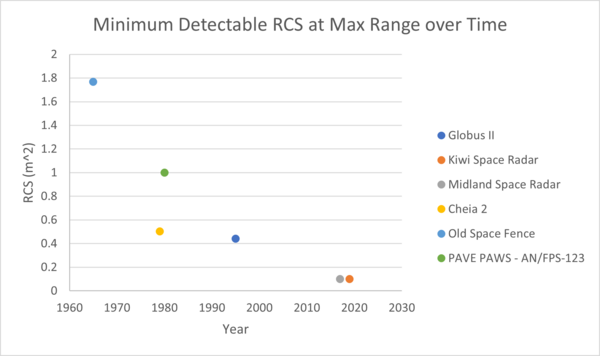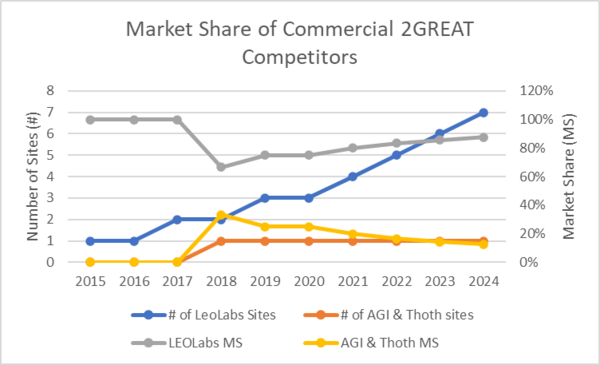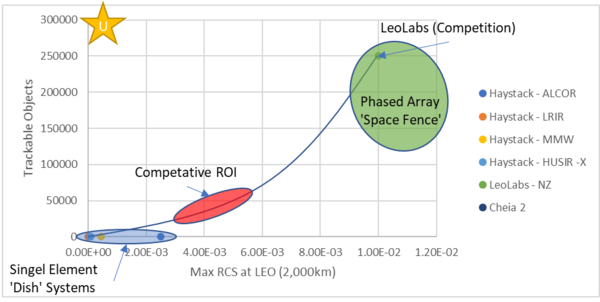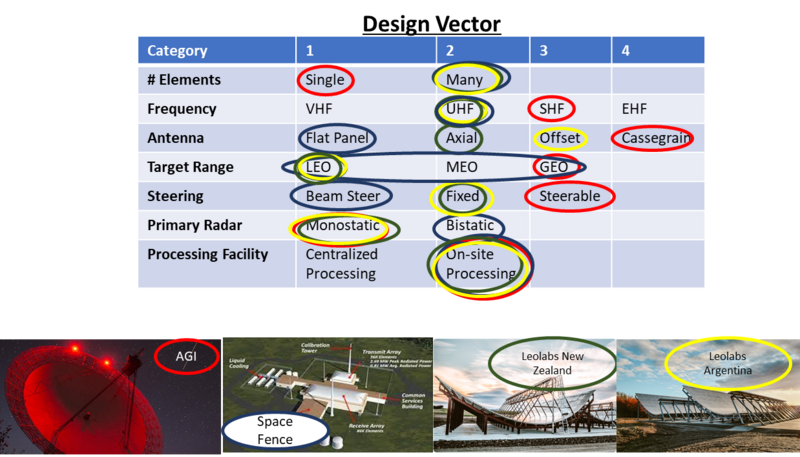Difference between revisions of "Ground Based Radar For Space Situational Awareness"
| Line 76: | Line 76: | ||
==Alignment with Company Strategic Drivers== | ==Alignment with Company Strategic Drivers== | ||
There is only one company, LeoLabs, that has developed a commercial radar system that has been deployed to multiple sites. Only one other commercial company entered the market, Ansys Government Initiative (AGI), but their market driver was primarily driven to create a better data analysis tool. | There is only one company, LeoLabs, that has developed a commercial radar system that has been deployed to multiple sites. Only one other commercial company entered the market, Ansys Government Initiative (AGI), but their market driver was primarily driven to create a better data analysis tool. | ||
[[File:2Great_Market.png|600px]] | [[File:2Great_Market.png|600px]] | ||
While each LEOLabs site has some variability, they all leverage a similar architecture. The system consists of a space fence type of architecture (phased array, stationary antenna), which trades accuracy and min RCS for many objects tracked per day. However, as LEO orbit has become more congested, systems with low RCS cannot differentiate between two CubeSats spaced close together and have less TLE accuracy. The saturation of low-accuracy data is causing significant issues in the space catalog (e.g., misidentification based on poor orbit prediction). Additionally, with more congestion comes more debris or debris potential. This will drive a need for low RCS tracking to ensure full coverage from 1+cm objects, which can threaten life and property. | |||
{| class="wikitable" style="margin:auto" | {| class="wikitable" style="margin:auto" | ||
Revision as of 14:46, 13 November 2023
Technology Roadmap Sections and Deliverables
This technology roadmap is identified as:
- 2GREAT - Ground Based Radar For Space Situational Awareness
Or as Ground-based Radar to Enable Awareness and Tracking (GREAT)
Space Situational Awareness and Tracking (SSA) is the operational concept to detect, identify, and track Resident Space Objects (RSOs), orbiting around the Earth. The SSA/T enterprise is comprised of ground-based and space-based sensors with a broad customer base. SSA originated from the need to track RSOs in orbit to support data analysis and collision avoidance of active satellite vehicles (SVs), inactive SVs, and orbital debris. As of 1 September 2023, the European Space Agency estimates about 8600 functioning SVs, over 1,036,500 objects greater than 1cm, and more than 11,000 tonnes of mass in orbit1.
The figure below illustrates the levels within the SSA/T enterprise. Many systems comprise the architecture, each with technological challenges, advantages, and disadvantages.
Ground Based Radar For Space Situational Awareness and the SSA Enterprise
Roadmap Overview
SSA was initiated in the 1950s to support missile warnings of intercontinental ballistic missiles. The first of these radars was developed to identify and track missiles when they reach the apogee of their suborbital flight and begin their re-entry. In 1955, shortly after the sub-orbital radars began operation, the Soviet Union launched its first satellite, and a new space race began. With the growing concern about the need to track low earth orbit (LEO) satellites, most suborbital missile warning radars began to support detecting and tracking satellites.
Today, over 26,000 objects over 10 cm are tracked by the United States SSA network, and countless more pieces of debris under 10 cm. This debris poses a risk to satellites in orbit, space stations, launch vehicles, and satellites transit through orbits.
Amount of Orbital Debris by Type, from NASA Quarterly "Orbital Debris" March 2022 Newsletter, Accessed 2 October 2023 https://orbitaldebris.jsc.nasa.gov/quarterly-news/pdfs/ODQNv27i1.pdf
The Ground-based SSA network consists of multiple active and passive sensors. The most capable systems are ground-based radars. A ground-based SSA radar has varying subsystem architectures such as phased arrays, single arrays, monostatic, or bi-static systems. Each radar system varies in frequency and power based on the needs of that radar site. Many SSA systems are networked to support the shared object identification and tracking catalog.
Artist's impression of various SSA systems comprising a full SSA architecture. “Space Surveillance and Tracking - SST Segment.” Accessed October 1, 2023. https://www.esa.int/Safety_Security/Space_Surveillance_and_Tracking_-_SST_Segment.
Broadly speaking, a ground-based radar consists of a radar transmitter and receiver, a master computer, and a user interface. The system emits a high-power waveform and then attempts to identify radar returns from the received noise. This process is not trivial. The system must transmit with enough power to overcome path loss, which reduces the range of a radar by Range4, and Atmospheric Scintillation in both directions. The return signal is often so faint that the main computer must use advanced signal processing and detection algorithms to find the return signal in the noise. The signal must then be tracked to collect its azimuth and elevation from the radar and the range and range rate. This data can then be used to identify and provide the object's location, as a two-line element, to cataloging agencies such as the United States Space Force.
Diagram showing Ground-Based Radar Overview
This Roadmap will explore what technology has driven the success of SSA radars, how to optimize the system further, and what innovative, potentially disruptive, technologies are on the horizon.
Design Structure Matrix (DSM) Allocation
The DSM below provides a NxN mapping of the ground-based radar SSA system technologies. The DSM identifies the connective relationship between elements within the matrix (grey).
Roadmap Model using OPM
The Object-Process Diagram (OPD) is of a Ground-based Radar with the mission of tracking Resident Space Objects (RSOs) in support of Space Situational Awareness. The Radar has four primary subsystems: the Radar Transmitter Subsystem, Radar Receiver Subsystem, Radar Signal Processor System, and the User Interface Computer. These four subsystems operate the process of transmitting radio waves to reflect off a RSO target, receiving the return reflected radio waves, and then processing the received radar data into digital tracks to be displayed to an operator and passed to external communication networks.
Figures of Merit
The table below shows the Figures of Merit (FOMs) that can be used to assess the improvement of Ground-Based Radars for Space Situational Awareness. The key FOMs are indicated in bold.
The governing equations for the key FOMs are listed in the table below. Note that the first two equations are both interpretations of the radar range equation.
Data collection was limited due to the highly propriety nature of commercial systems (e.g., LeoLabs) or due to the information protection enforced on military-funded programs (e.g., MIT Milestone or Lockheed Martin’s Space Fence). However, the team was able to collect and compare the advertised minimum detectable radar cross-sections at each system’s stated range. A plot of the minimum detectable radar cross-sections at maximum range over time can be seen below.
Notice that the trend is sloping downwards and beginning to level out. The downward slope indicates an improvement of the technology over time. The minimum detectable radar cross section can never be zero, as it is not physically possible to see something with a diameter of 0 meters. However, the goal, and thus theoretical limit, would be to approach zero.
Alignment with Company Strategic Drivers
There is only one company, LeoLabs, that has developed a commercial radar system that has been deployed to multiple sites. Only one other commercial company entered the market, Ansys Government Initiative (AGI), but their market driver was primarily driven to create a better data analysis tool.
While each LEOLabs site has some variability, they all leverage a similar architecture. The system consists of a space fence type of architecture (phased array, stationary antenna), which trades accuracy and min RCS for many objects tracked per day. However, as LEO orbit has become more congested, systems with low RCS cannot differentiate between two CubeSats spaced close together and have less TLE accuracy. The saturation of low-accuracy data is causing significant issues in the space catalog (e.g., misidentification based on poor orbit prediction). Additionally, with more congestion comes more debris or debris potential. This will drive a need for low RCS tracking to ensure full coverage from 1+cm objects, which can threaten life and property.
| Strategic Driver | Alignment and Targets |
|---|---|
| To develop a commercially available ground-based SSA radar to achieve 30% of the commercial radar market share by 2035. | The 2GREAT Technology Roadmap will target the commercial market to compete with LEOLabs monopoly. The system will focus on providing a capability that capitalizes on a separate trade space to avoid a performance Nash Equilibrium. |
| To develop an antenna architecture that will outperform LEOLabs systems with a lower minimum RCS, providing accurate TLEs for objects not able to be tracked by LEOLabs. | The company will pick an architecture focusing on the ability to track small objects with an RCS as low as X cm for a longer period of time. |
| To develop commercially available signal processing Machine Learning models/algorithms that can decrease the minimum detectable power, Generating $XXm by 2035. | The 2GREAT roadmap will decrease the Pe by XXX through the implementation of ML algorithms which can find low power patterned signals in the background noise. |
Positioning of Company vs. Competition
Technical Model
Draft Section to address: Design Considerations for each architecture option
Explain each example architecture
Financial Model
List of Demonstrator Projects
Key Publications and Patents
Rowland, J., McKnight, D., Pino, B. P., Reihs, B., & Stevenson, M. A. (2021, September). A worldwide network of radars for space domain awareness in low earth orbit. In Advanced Maui Optical and Space Surveillance Technologies Conference (AMOS), Maui, HI, USA. https://amostech.com/TechnicalPapers/2021/Poster/Rowland.pdf
This paper outlines a plan to conduct space object detection and tracking for Low Earth Orbit using radar. It discusses the company's network of radars around the world, as well as how the company plans to use these radars to track objects. Finally, it characterizes and projects the performance of its systems. This paper is authored by one of the initial, main commercial space domain awareness companies, LeoLabs.
J. Ender, L. Leushacke, A. Brenner and H. Wilden, "Radar techniques for space situational awareness," 2011 12th International Radar Symposium (IRS), Leipzig, Germany, 2011, pp. 21-26. https://ieeexplore.ieee.org/stamp/stamp.jsp?tp=&arnumber=6042108
This paper discusses the advantages and disadvantages of using radar for space object detection and tracking. It discusses the university’s (FHR) contributions to radar-enabled space situational awareness. It has facilities that develop, test, and analyze radar techniques. This paper is useful in defining pros/cons of radar for space situational awareness as well as providing insight into methods of tracking improvement.
US1981884A: Systems for detecting objects by radio (1933) Inventors: Albert H Taylor, Leo C Young, Lawrence A Hyland
This patent outlines how to detect objects using radio signals. It includes drawings of system diagrams and plots of signals, and it shows how this technology could be used to locate an airplane as well as a ship. This is one of the earliest patents on radar-type technology, and it outlines generically how objects are detected.
US11592549: Calibrating radars and tracking space objects (2020)
Inventors: LeoLabs (Michael Nicolls, John Buonocore, Daniel Ceperley, Edward Lu, Steven Chen, Christopher Rosner, Matthew Stevenson, Craig Trumbull, Gerald Wong, Matthew Adelman, Inkwan Park, Nathan Griffith, Sanado Barolli)
This patent describes and shows how to calibrate 1D phased array radars, and it outlines the general construction of the radars. It discussed the composition of the radars and how parts should communicate with each other. It also discusses the general process flow of object detection to orbit determination. This patent is from one of the initial, main commercial providers of space object tracking using radar.
US10734182B2: Ultra-high efficiency single-beam and multi-beam inductive output tubes (2020)
Inventors: Georgia Tech Research Corporation (Walter Sessions, Henry Freund)
This patent describes an invention of using multi-beam splitting for amplification of an RF modulating signal. It includes drawings of the technology and descriptions of how it will amplify the signal and modulate it onto electron beams. Instead of klystrons, this proposes using several inductive output tubes in parallel. This patent relates directly to one of the 2GREAT figures of merit, as it focuses on improving the efficiency of output signal power.
Technology Strategy Statement
References
[1] European Space Agency, Space Environment Statistics, Accessed 1 October 2023 https://www.esa.int/Space_Safety/Space_Debris/About_space_debris#:~:text=In%20more%20than%2060%20years,10%20cm%20in%20low%2DEarth
